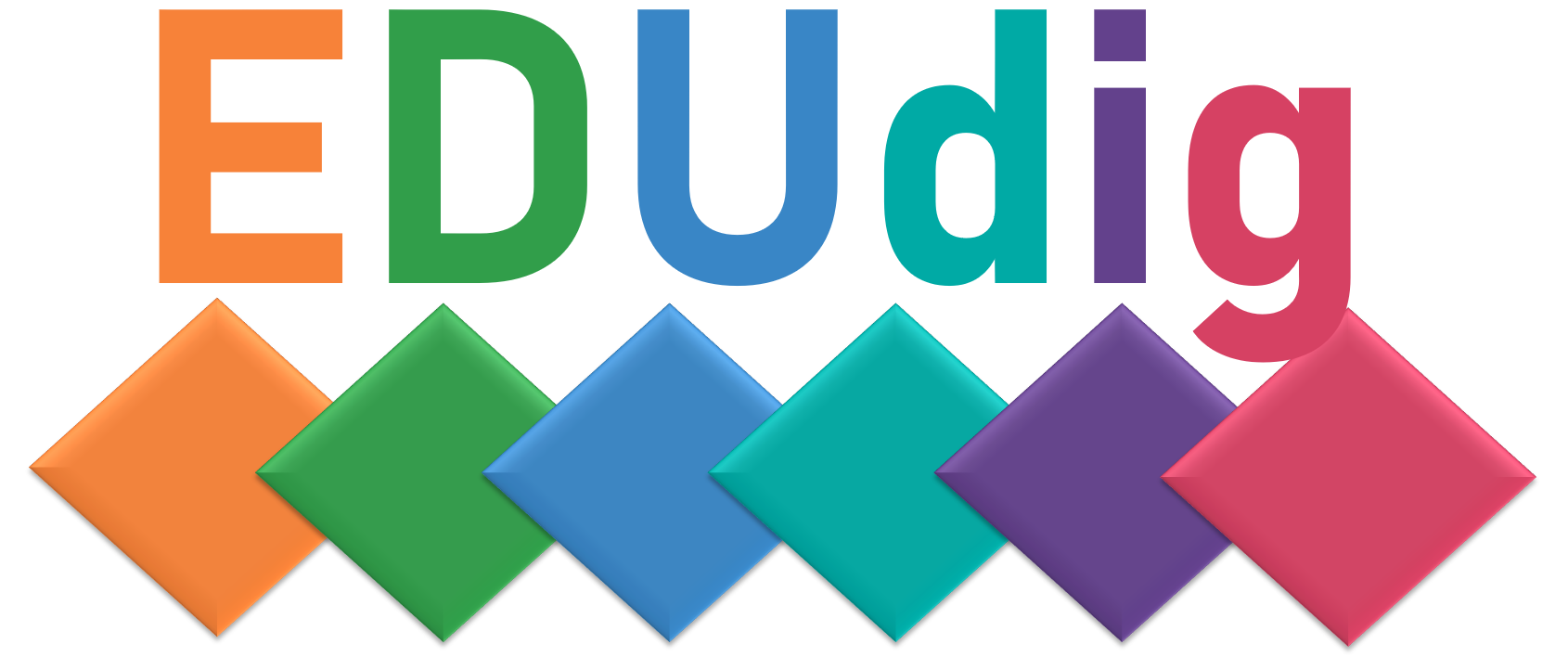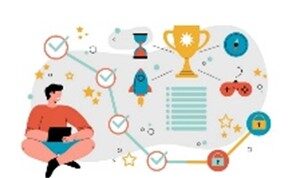Training
3.2.6 Implementation – gamification
Gamification in education refers to the use of game design elements and principles in educational settings. It involves applying game-like features such as points, badges, leaderboards, challenges, and rewards to educational tasks and activities [5]. The purpose of gamification in education is to create a more immersive learning experience that motivates students to participate actively in the learning process, enhance their engagement, and help them develop a range of skills and competencies. It can be applied to various types of educational activities, including lectures, quizzes, homework assignments, and projects, among others.
Collaborative learning can be enhanced by incorporating gamification mechanics into various activities, units, or modules. This approach boosts learners’ curiosity about the content, encourages communication and collaboration, increases engagement, and creates a sense of belonging to the group. As a result, learners become enthusiastic and eager to participate.
Motivational mechanics
The mechanics are rules and settings provided by the technology. They define how participants are engaged in the course, how they receive feedback and progress in gamified learning. There are also elements (a set of strategies taken from the game and applied in the learning environment) such as progression, room for error, visible status, time constraints, surprise – elements of the unexpected.
Programme example [6]
The programme has five modules. Each module finishes with an assessment activity, for instance a quiz, to be able to continue. The modules form a learning path where the learners distinguish among content units, activity elements and challenges. The whole programme is enriched with points, badges for accomplished goals and optionally leader boards. The following content can have restricted access and assigned specific objectives that students must achieve to unlock it. For instance, to earn a certain number of points. Depending on the results of assignment activities, the learner earns points and can progress.

Image source – Screenshot taken from [6]. Gamification for Motivation. YouTube. https://youtu.be/T5be3yiVAus
The motivational mechanics mentioned are frequently independent of the content itself. This means that the gamification format can be implemented in a different course, content, or programme with the same mechanics, despite variations in the material being taught.
Cognitive gamification
The cognitive gamification reflects the content itself with a purpose to deeply engage the learner directly with the content. Those elements are unique for the content and cannot be reused and applied in topically different environments [7].
It is possible to adapt stories – concluding every chapter with a suspenseful moment. Consequently, learners become eager to discover what occurs afterwards and they seek the knowledge needed to access the next chapter. When curiosity is aroused, the satisfaction of it can be a reward [6].
Programme example
One example is a lab simulation. The practical part of the programme offers learners to get engaged with different possibilities to get the result. They can experiment with different techniques, observe the outcomes, formulate hypotheses regarding what went wrong, and attempt to apply their knowledge.
This learning approach allows students to explore multiple options and address challenges through trial and error, similar to a branching scenario.
Learners see the outcomes of various decisions, and the trial-and-error process is personalized to each individual. Each person brings their unique ideas to the content and progresses through their own path, discovering the ideal combination of techniques at their own pace. This personalized approach contributes to a more effective training experience [7].
Branching scenario
>>https://edudig.eu/branching-scenario/
Desinging gamification and possibile implementation in Moodle
>>https://edudig.eu/wp-content/uploads/2022/12/Designing-gamification-for-collaborative-learning.pdf

